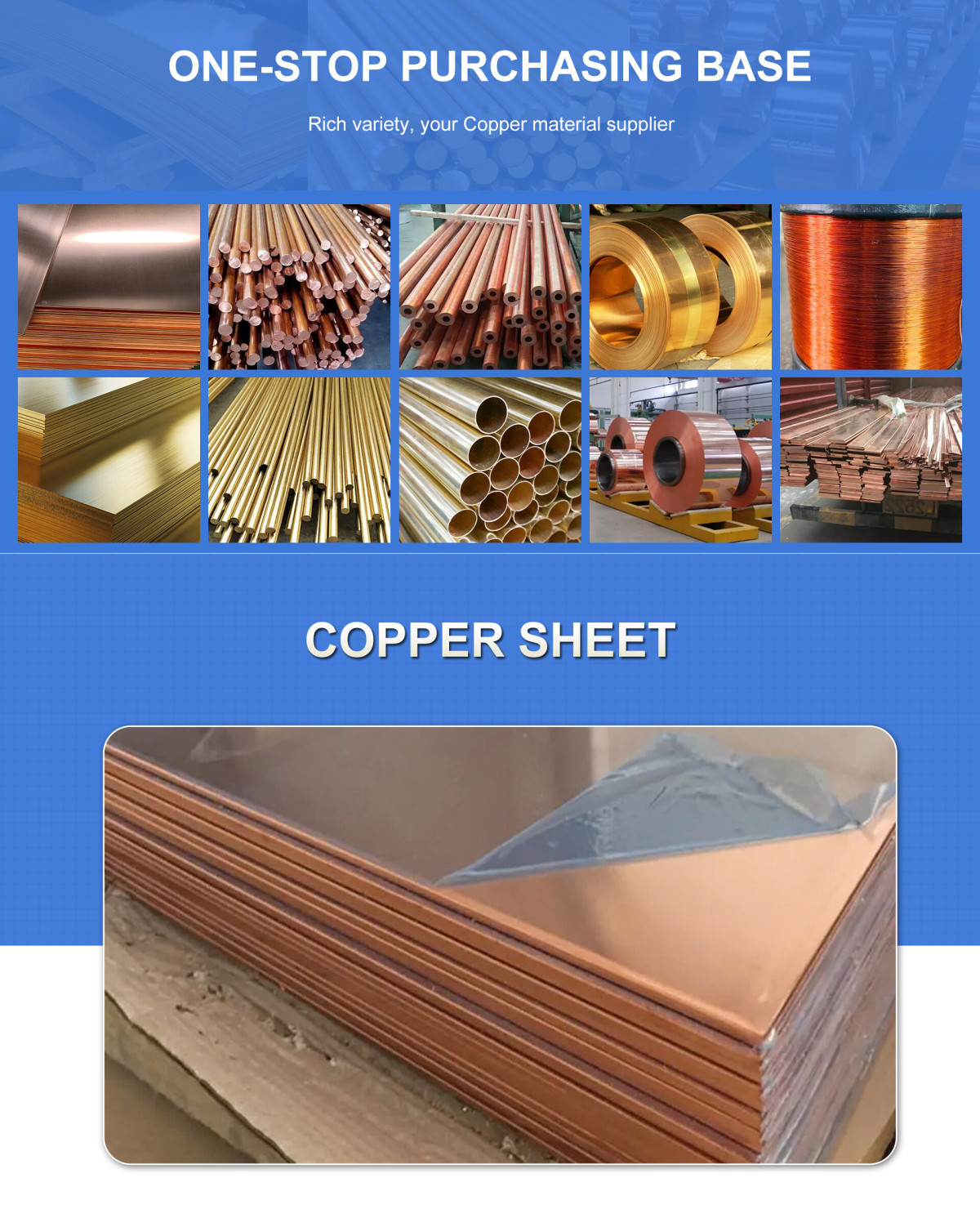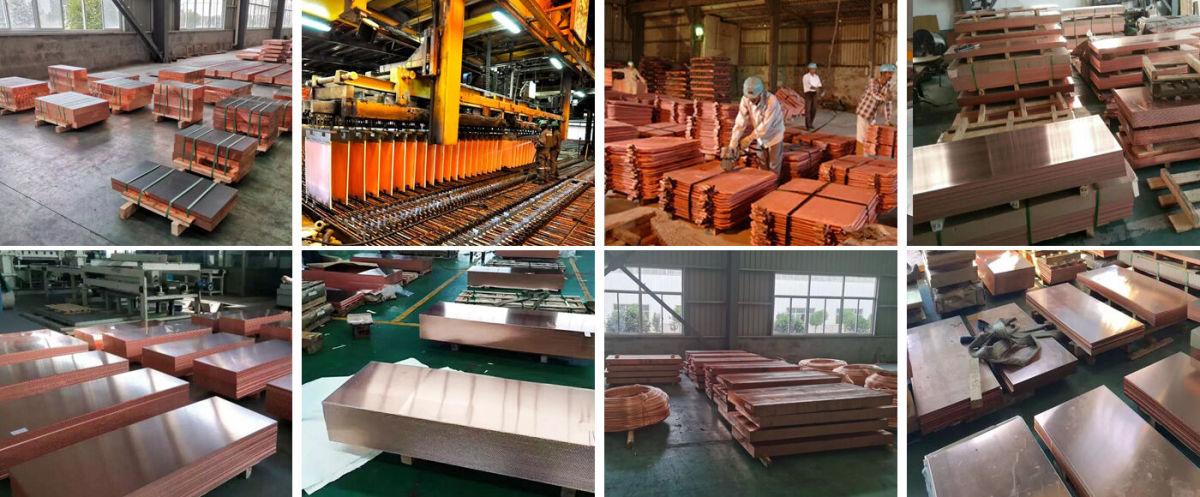
Detailed size range
Hot rolled sheet
Thickness: 2–300 mm
Width: 200–3000 mm
Length: 500–6000 mm
Cold rolled sheet
Thickness: 0.1–12 mm (0.2–3 mm common)
Width: 100–3000 mm
Length: ≤10000 mm
Special specifications
Cold rolled foil is available in thicknesses of 0.05–0.1 mm and widths of 40–600 mm, supplied in coils.
International standards
China GB standard: QSn4-4-4
US ASTM standard: C54400 (corresponding to ASTM B103/B139 standard)
European DIN/EN standard: CuSn4Zn4Pb4
Japanese JIS standard: C5441
International ISO standard: CuSnPb4Zn3
The main components of C54400 are copper as the base, with elements such as tin, lead, zinc and phosphorus added. The specific ranges are as follows:
Copper (Cu): balance (usually accounting for about 87%-89%).
Tin (Sn): 3.5%-4.5% (some documents extend to 3.0%-5.0%).
Lead (Pb): 3.4%-4.5% (key element, improving cutting performance).
Zinc (Zn): 1.5%-4.5% (some documents are marked as 3.0%-5.0%).
Phosphorus (P): 0.01%-0.50% (enhancing wear resistance and rigidity).
Other elements: Iron (Fe) ≤0.10%, the total of impurities such as aluminum (Al) and antimony (Sb) ≤0.2%.
Mechanical properties are significantly affected by the material state (such as annealing, cold working, heat treatment), and the main parameters are as follows:
Tensile strength
Range: 275 MPa (annealed state) to 745 MPa (spring aged state).
Typical value: 345-450 MPa for hard bars, up to 670 MPa for spring aged (H08).
Yield strength
Range: 131-434 MPa, depending on the processing state.
Elongation
Annealed state: up to 50% (some literature marked as 8%-18%).
Hard state: ≥8% (such as hard bars).
Hardness
Rockwell hardness (HRB): 7 (soft state) to 97 (superhard state).
The Rockwell B hardness of spring aged (H08) is 92.
Modulus of elasticity: 110 GPa (Young's modulus), shear modulus 40 GPa.
Other key properties
Processing performance
Cold workability: Excellent, suitable for stamping, bending and other processes, but the lead content limits deep drawing.
Hot workability: Not recommended, because lead may cause hot brittleness.
Weldability: Good soldering and brazing, but not suitable for oxyacetylene welding.
Corrosion resistance
Excellent performance in seawater, atmosphere and acid and alkali environment, suitable for marine engineering.
Application areas
Bearings, bushings, gears, valve parts, electrical connectors, etc.

Production process and product advantages of C54400 copper plate:
1. Production process
Cold processing process
C54400 copper plate mainly adopts cold processing, including cold rolling, cold forging and other processes. Since the lead component is easy to cause hot brittleness during hot processing, hot processing is generally not recommended for this alloy. The degree of deformation needs to be controlled during cold processing (generally not more than 30%), and bending, forming and other operations can be performed after annealing.
Casting and forming
Some products are produced by casting process, and lead elements (3.4%-4.5%) are added to improve cutting performance, while tin, phosphorus and other components are combined to optimize mechanical properties.
Heat treatment and annealing
The annealing temperature range is 475-675°C (900-1250°F), and the plasticity and processability of the material are improved by soft annealing process.
Surface treatment
Possible processes include cleaning, degreasing, painting, etc., but the specific steps need to be customized according to application requirements.
2. Product Advantages
Excellent cutting performance
The high lead content (3.4%-4.5%) significantly improves cutting efficiency, which is 4 times that of ordinary tin-phosphor bronze and is suitable for high-precision processing.
Excellent cold workability
It exhibits good plasticity in the cold state, suitable for forming processes such as cold rolling and cold forging, and has moderate deformation capacity.
High strength and wear resistance
The tensile strength can reach 275-745 MPa, and the hardness range is HRB 7-97. It has both high strength and wear resistance, and is suitable for high-load components such as bearings and gears.
Outstanding corrosion resistance
It has excellent corrosion resistance in seawater, atmosphere and acid-base environments, and is especially suitable for applications such as ship propellers and marine engineering equipment.
Good electrical and thermal conductivity
As a copper-based alloy, it inherits the excellent electrical conductivity of copper (thermal conductivity 87.12 W/m·K), and is suitable for electrical equipment and heat conduction components.
Self-lubricating and low friction
The lead element gives the material self-lubricating properties, with a friction coefficient as low as 0.016 (with lubricant), reducing component wear.
Q1:Do you provide samples? Is it free or extra?
A1:Yes, we can provide samples free of charge and the customer will pay the freight.
Q2:What if I don't have export experience ?
A2:We have reliable forwarder agent which can ship items to you by sea/air/Express to your doorstep. Any way, we will help you choose the most suitable shipping service.
Q3:How long is your lead time?
A3:If it is in stock, it is usually 5-10 days. Or, if there is no inventory, 15 days, depending on the quantity.
Q4:What are your terms of payment?
A4:30% T/T deposit in advance, 70% T/T balance within 5 days after B/L copy, 100%.Irrevocable L/C at sight, 100% Irrevocable L/C after receive B/L 30-120 days, O/A.
Q5:How is your technical support?
A5:We provide lifetime online support through Whatsapp/ Skype/ Wechat/ Email. Any problem after delivery, we will offer you call anytime.
Welcome To Your Inquiry
What can we help you?
RELATED PRODUCTS










